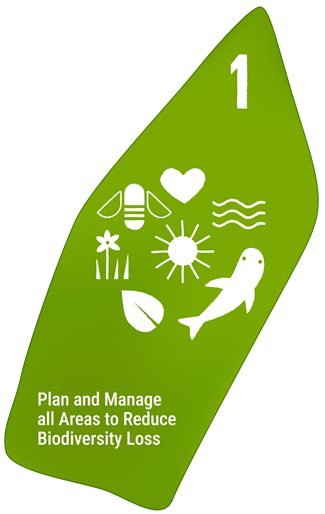 RAMSAR
RAMSAR
World Wetlands Day-- 2 February 2025
Protecting wetlands for our common future
Today we celebrate the importance of wetlands.
Marshes, ponds, lakes, rivers, floodplains, swamps, fens, estuaries, mangroves, and lagoons are precious parts of what makes this planet such a hospitable, beautiful and bountiful home to humankind.
Wetlands provide innumerable benefits.
More than a billion people across the world depend on them for their livelihoods.
40 per cent of all plant and animal species live or breed in them. This includes many endangered, threatened and endemic species that can only survive in certain wetland habitats and nowhere else.
Wetlands link habitats and facilitate the movement of species. This role is vital for maintaining genetic diversity and healthy fauna populations.
Freshwater wetlands, in particular, are hotspots for biodiversity, hosting almost all amphibians, half of fishes and over one third of vertebrates.
Peatlands store 30 per cent of land-based carbon, keeping it safely locked away from the planet’s atmosphere.
Lakes and rivers supply food and medicine.
Mangroves and coral reefs serve as a natural defence against climate-induced hazards and disasters.
But the planet is shedding wetlands at an alarming pace. 35 per cent of them have been lost since 1970.
This staggering decline shares many of the drivers of biodiversity loss, chiefly unsustainable practices in construction, agriculture, industry, tourism and other sectors running at the expense of nature.
Failure to protect wetlands means foregoing immense benefits for people, including jobs, health and well being, and for all living things.
Yet, wetlands are sometimes viewed and treated as wastelands and are left to rot.
So, World Wetlands Day provides an opportunity to highlight the vital importance of these ecosystems and why everyone should care about their plight.
Indigenous peoples and local communities who have safeguarded and benefited from wetlands for millennia must be part of the policy solutions to the ills afflicting these ecosystems.
Women and youth must be given the space and means to contribute to protecting them.
In a world shaped by urbanization, ensuring biodiversity-inclusive urban planning is critical for a sustainable future.
When COP16 of the Convention on Biological Diversity reconvenes in Rome later this month, Parties will consider a decision endorsing the sixth joint work plan 2024–2030 of the CBD and the Convention on Wetlands of International Importance – the RAMSAR Convention.
We at the CBD Secretariat are proud of our long-standing cooperation with the Ramsar Convention, including in the context of the Kunming-Montreal Global Biodiversity Framework, the world’s masterplan to halt and reverse biodiversity loss.
Making peace with nature includes protecting wetlands, for our common future.
More information:
Related Targets in The Kunming-Montreal Global Biodiversity Framework
Ensure that all areas are under participatory, integrated, and biodiversity inclusive spatial planning and/or effective management processes addressing land and sea use change, to bring the loss of areas of high biodiversity importance, including ecosystems of high ecological integrity, close to zero by 2030, while respecting the rights of indigenous peoples and local communities.
Why is this target important?
Land-use and sea-use change are major direct drivers of biodiversity loss. Land-use change has had the largest relative negative impact on terrestrial and freshwater ecosystems since 1970, with agricultural expansion being the most widespread form of land-use change. Marine and coastal ecosystems have been significantly affected by human activities as well, with research demonstrating increasing cumulative impacts of human activities in more than 60 per cent of the ocean.
Increasing demands and conflicting uses of land, inland water and ocean space and resources underscore the need for cross-sectoral approaches that allow for the consideration of multiple interests, values and types of use. Integrated spatial planning and/or effective management processes allow countries to analyze and then effectively allocate the spatial and temporal distribution of activities in each environment to achieve various social, ecological and economic objectives. Integrated and participatory spatial planning helps bring together all stakeholders for a particular space and thereby ensure the prioritization and proper allocation of various activities and thereby balance the need to safeguard nature, while advancing sustainable socioeconomic development and ensuring food security and human well-being. The ecosystem approach as well as the many examples of guidance and experience in implementing this approach also provide a strong basis for this target.
Links to other elements of the Biodiversity Plan and other frameworks and processes
- Actions to reach Target 1 should take into account all of the considerations for implementation identified in section C of the Kunming-Montreal Global Biodiversity Framework.
- Progress towards this target will support the attainment of goals A and B of the Kunming-Montreal Global Biodiversity Framework. In addition, progress towards this target will directly support the attainment of targets 2, 3, 5, 10 and 12 of the Framework. Conversely, progress towards targets 14, 19, 20, 21, 22 and 23 will help to reach Target 1.
- Target 1 addresses issues that were previously addressed by Aichi Biodiversity Target 5.
- Elements of Target 1 are also addressed in the targets of the Sustainable Development Goals, including targets 14.2, 15.1, 15.2, 15.5 and 15.9.

Ensure and enable that by 2030 at least 30 per cent of terrestrial, inland water, and of coastal and marine areas, especially areas of particular importance for biodiversity and ecosystem functions and services, are effectively conserved and managed through ecologically representative, well-connected and equitably governed systems of protected areas and other effective area-based conservation measures, recognizing indigenous and traditional territories where applicable, and integrated into wider landscapes, seascapes and the ocean, while ensuring that any sustainable use, where appropriate in such areas, is fully consistent with conservation outcomes, recognizing and respecting the rights of indigenous peoples and local communities, including over their traditional territories.
Why is this target important?
Well-governed, effectively managed and representative protected areas and other effective area-based conservation measures (OECMs) are a proven method for safeguarding both habitats and populations of species and for delivering important ecosystem services and multiple benefits to people. They are a central element of biodiversity conservation strategies at local, national and global levels. Protected areas and OECMs can take various forms, ranging from strictly protected areas to areas that allow sustainable use consistent with the protection of species, habitats and ecosystem processes.
Links to other elements of the Biodiversity Plan and other frameworks and processes
- Actions to reach Target 3 should take into account all of the considerations for implementation identified in section C of the Kunming-Montreal Global Biodiversity Framework.
- Progress towards this target will directly support the attainment of Goal A of the Kunming-Montreal Global Biodiversity Framework. Progress towards this target will also help to reach targets 4, 9 and 11. Conversely, progress towards targets 1, 2, 12, 14, 19, 20, 21, 22 and 23 will help to reach this target.
- Target 3 addresses issues that were also addressed by Aichi Biodiversity Target 11
- Elements of Target 3 are also addressed in the targets of the Sustainable Development Goals, including targets 6.6, 11.4, 14.5 and 15.4

Ensure that areas under agriculture, aquaculture, fisheries and forestry are managed sustainably, in particular through the sustainable use of biodiversity, including through a substantial increase of the application of biodiversity friendly practices, such as sustainable intensification, agroecological and other innovative approaches contributing to the resilience and long-term efficiency and productivity of these production systems and to food security, conserving and restoring biodiversity and maintaining nature’s contributions to people, including ecosystem functions and services.
Why is this target important?
Agriculture, aquaculture, fisheries and forestry are globally important production systems that have varying impacts on ecosystems and biodiversity. The variety and variability of animals, plants and microorganisms used in these systems is an important aspect of biodiversity. Further, in many countries, activities associated with these production systems are important elements of human well-being and economic activity. However, the increasing demand for food, fibre and fuel is leading to increasing losses of biodiversity and ecosystem services, making sustainable management in these systems an urgent requirement. On the other hand, sustainable management not only contributes to biodiversity conservation but can also deliver benefits to production systems in terms of ecosystem services such as soil fertility, erosion control, enhanced pollination and reduced pest outbreaks, as well as contributing to the well-being and sustainable livelihoods of people engaged in agriculture, aquaculture, fisheries and forestry activities.
Links to other elements of the Biodiversity Plan and other frameworks and processes
- Actions to reach Target 10 should take into account all of the considerations for the implementation identified in section C of the Kunming-Montreal Global Biodiversity Framework.
- This target will contribute to the attainment of goals A and B of the Kunming-Montreal Global Biodiversity Framework. Further progress towards this target will facilitate the attainment of targets 2, 4, 6, 7, 8, 9, 11 and 16. Conversely, the attainment of this target will be facilitated by actions to reach targets 1, 14, 17, 19, 20, 21, 22 and 23.
- Target 10 addresses issues previously covered by Aichi Biodiversity targets 6 and 7
- Elements of Target 10 are also addressed in the targets of the Sustainable Development Goals, including targets 2.3, 2.4, 12.1, 12.2, 14.7 and 15.2.

Learn more about Target 10